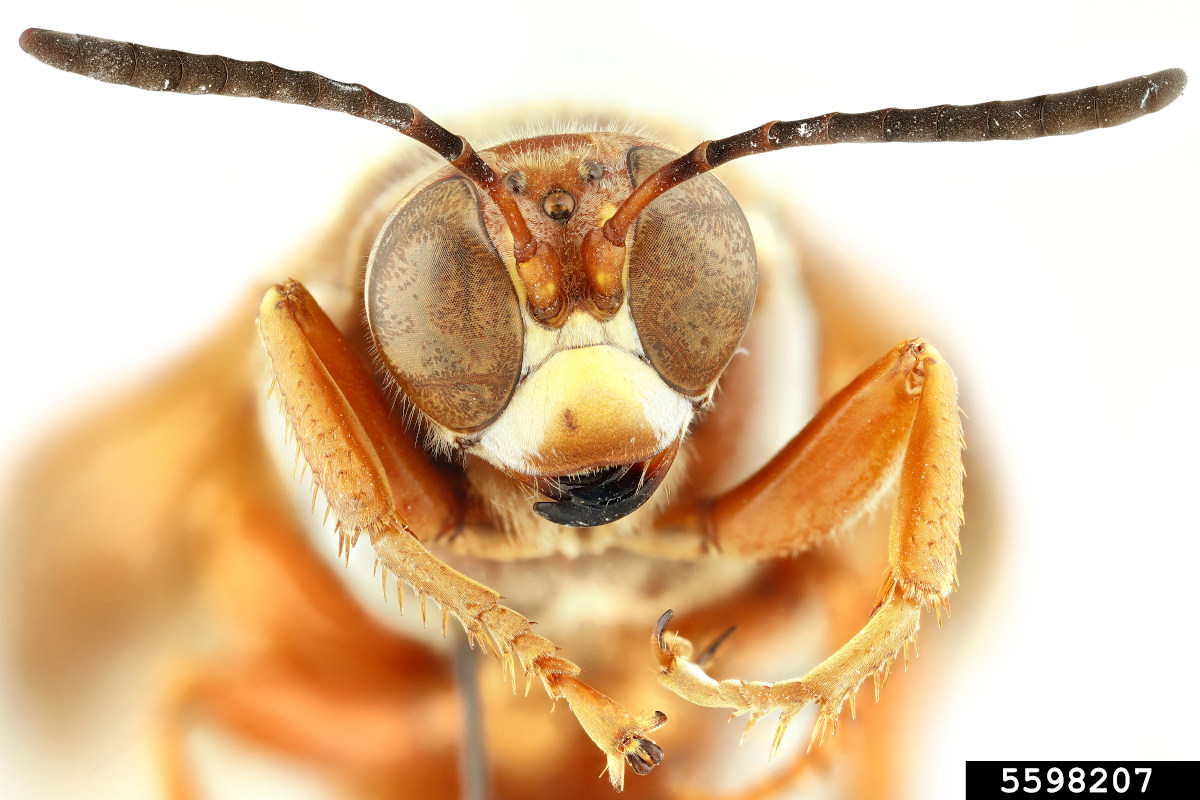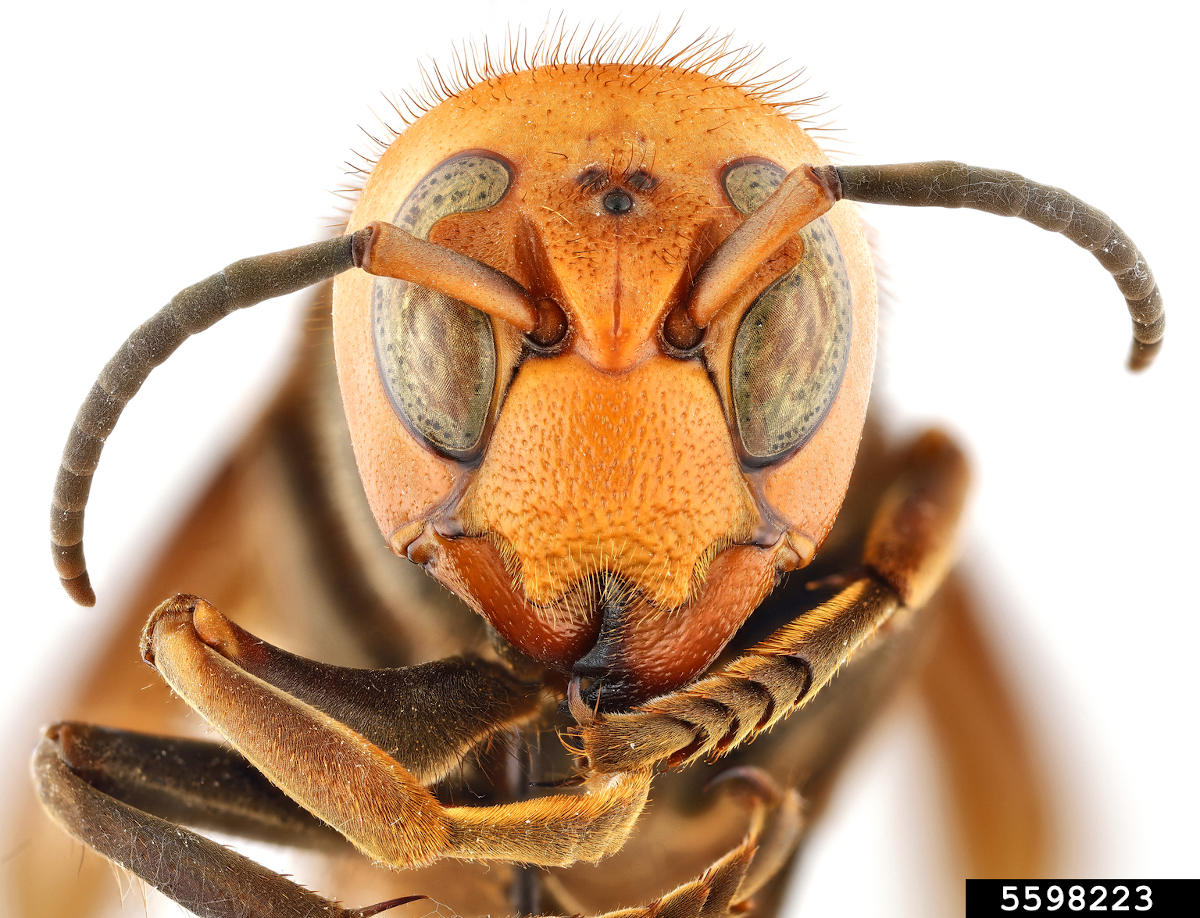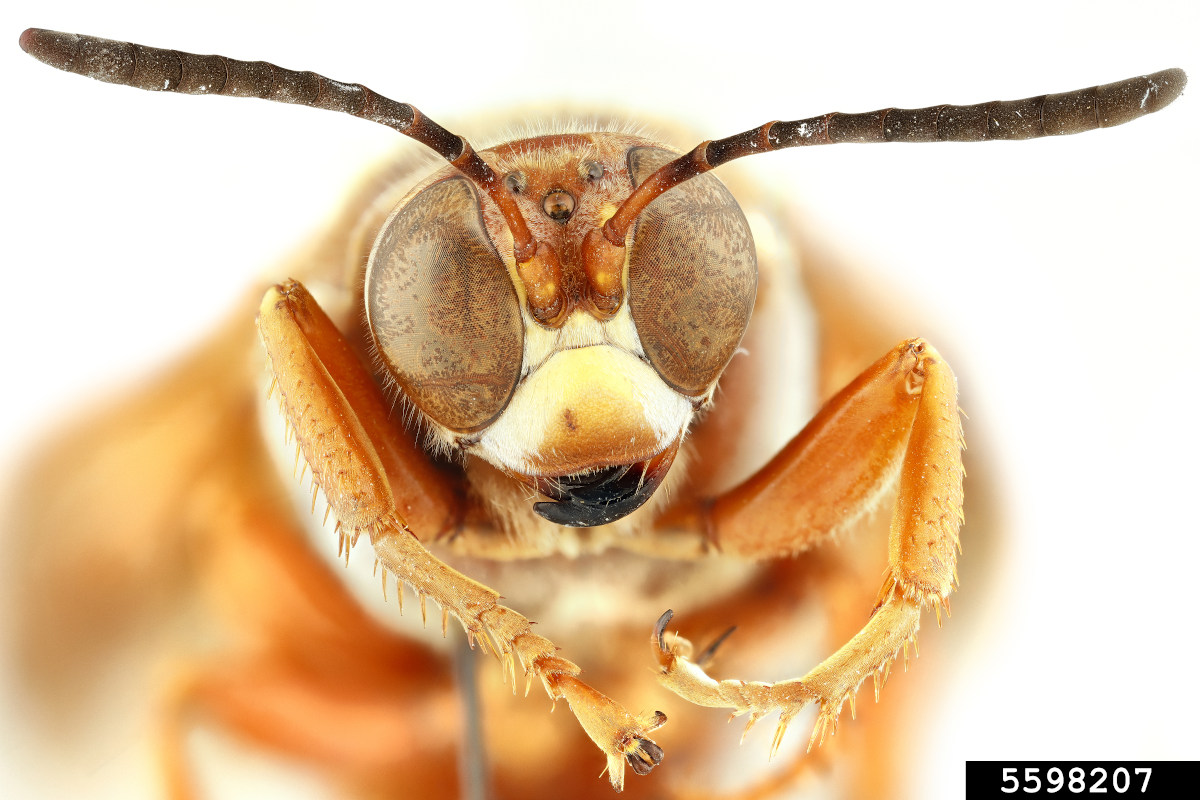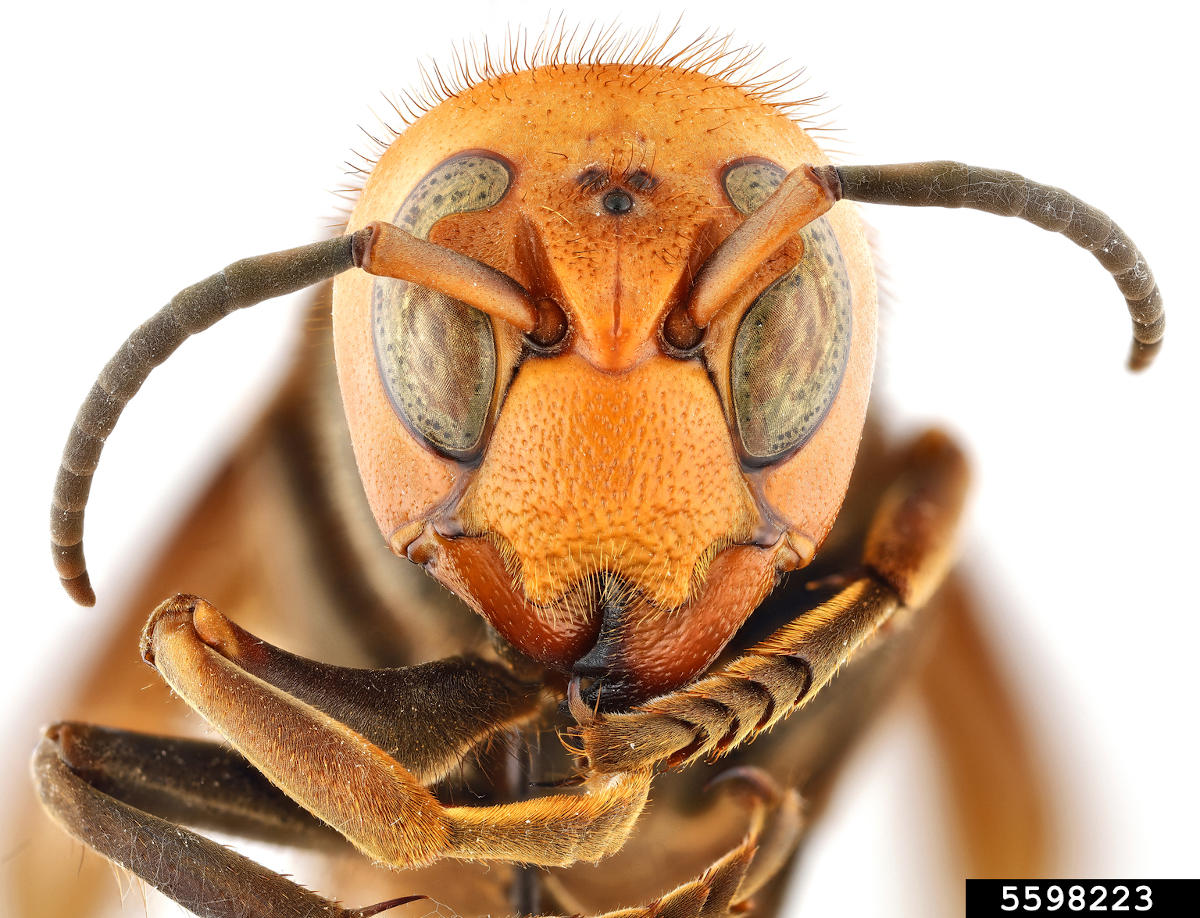The Usual Suspects
UI Extension Entomologists Seek To Clarify Confusion About Native Wasps
A harmless, native insect known as the cicada killer wasp is being implicated throughout Idaho in the crimes of an international invader with a menacing reputation.
University of Idaho Extension entomologists Jason Thomas, of Minidoka County, and Brad Stokes, of Elmore County, have recently responded to several purported sightings of northern giant hornets, formerly referred to as murder hornets.
Northern giant hornets, which attack bee colonies, have made national headlines since they surfaced in May 2020 in northwest Washington. They’ve also been found in southwest Canada, but there have been no confirmed sightings in Idaho to date. In most cases investigated by Thomas and Stokes, people confused the giant hornet with the cicada killer wasp – a large, solitary insect that is similar in appearance to the giant hornet but is docile and even beneficial, helping to control certain pests.
“They’re bigger than the standard wasp and make a loud noise when flying around,” Thomas said of cicada killer wasps. “People are afraid they’re going to get stung but they’re not highly aggressive.”
The entomologists partner in running the Idaho Insect Identification website, helping farmers, ranchers and Idaho’s general public correctly identify insects, arachnids and other arthropods. The site includes a specimen submission form, where users upload clear digital photographs and details about the bug of concern.
The site has prevented many of its users from unnecessarily targeting harmless or beneficial insects, such as cicada killer wasps, with pesticides.
“A lot of these we get are beneficial but the person inquiring said, ‘I believe it’s a pest.’ We do prevent pesticide misuse,” Stokes said. “We’re saving the person financially, as well as Idaho’s environment and ecosystems from unwarranted pesticide applications.”
Lately, the cicada killer wasp has been by far the most common insect submitted for identification. Furthermore, Stokes was inundated with questions about cicada killer wasps mistaken for northern giant hornets at the recent Elmore County Fair. In response, he posted about the beneficial insect on the county’s 4-H Facebook page: “Their value in the ecosystem far outweighs the potential sting hazard.”
Cicada killer wasps are known to visit flowers and play a role in pollination. Females hunt cicadas, which they paralyze with their sting and bring back to their subterranean nests. They lay their eggs in cicadas to provide a food source for offspring. Idaho has species of cicadas that hatch annually, but the wasps are also willing to feed on stink bugs, grasshoppers and other large insects.
Northern giant hornets prefer cool, forested environments. They grow to about 2 inches long, which is still roughly three-quarters of an inch bigger than cicada killer wasps. Northern giant hornets have gold and yellow bands and are most easily distinguishable by their oversized heads and mandibles, which they use to attack and crush honeybees before feeding on bee larvae and pupae.


Article by John O’Connell, College of Agricultural and Life Sciences
Photos by Hanna Royals, Museum Collections: Hymenoptera, USDA APHIS PPQ, Bugwood.org.
Published in September 2022








